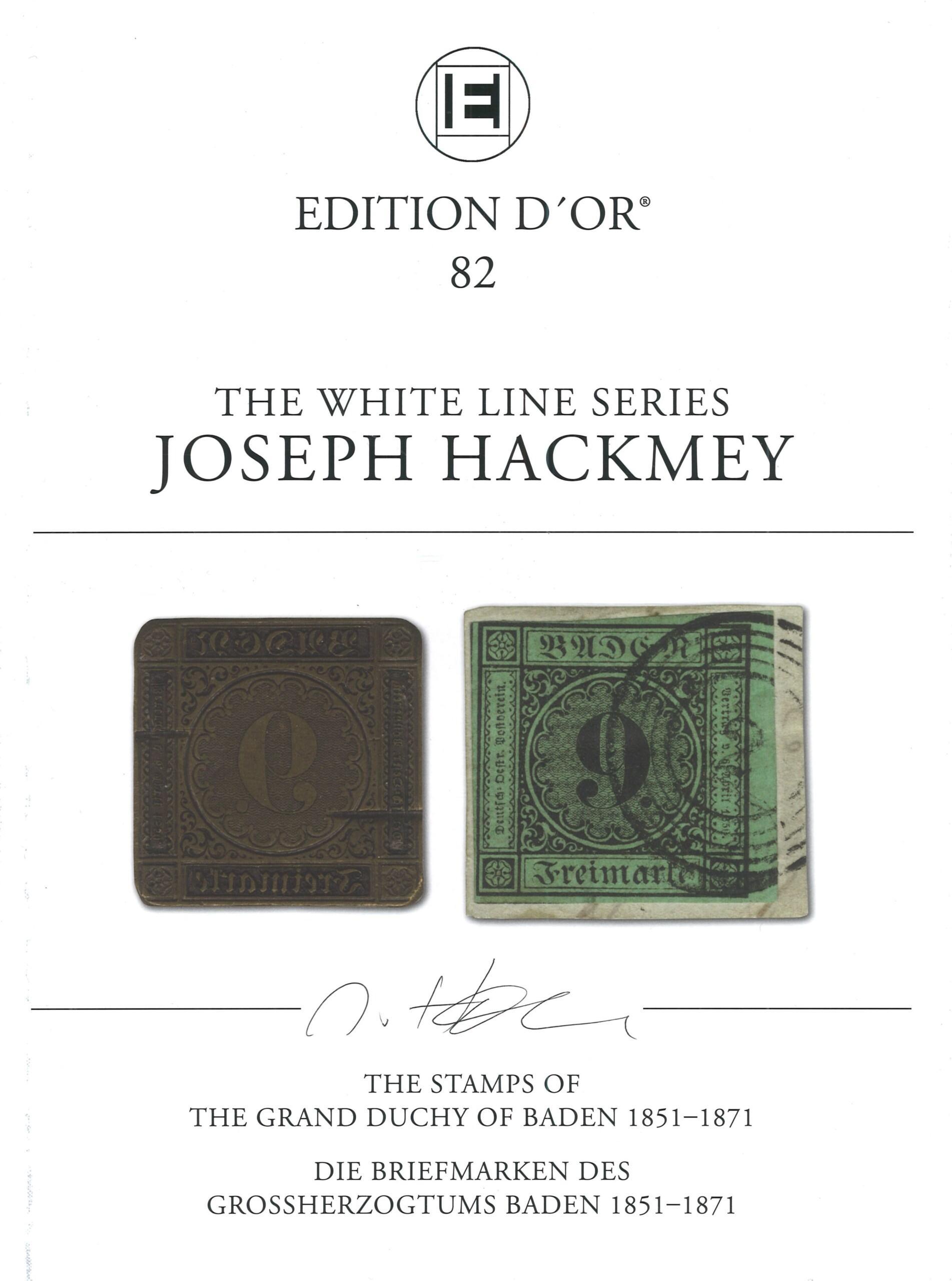(jh/wm-pcp) Joseph Hackmey is undisputedly considered one of the most important philatelists of all time. No one else has won more Grand Prix awards at FIP exhibitions than he has with his various collections. One of his so-called ‘small’ collections is documented in this new book: Baden. Hackmey considers his collections to be ‘small’ if they are ‘only’ up to 200 pages long, “medium” if they have up to 1,000 pages, and ‘large’ if they have many more. The ‘White Book Series’ of the Global Philatelic Network will be dedicated to many of his collections in order to preserve them from oblivion. So far, in less than a year, five titles have already been published in this ‘author series’.
Like all Edition d’Or volumes, the book begins with an impressive biography of the philanthropist and philatelist, who was born in Tel Aviv in 1945. His successful career enabled him to support welfare organisations and other projects, as well as devoting himself to art alongside philately. He is considered a special friend of classical music, promoted the Israeli Opera and the Philharmonic Orchestra, awarded countless scholarships and much more.
But now to the book and the contents of the exhibit itself. After a transitional phase of only five years as a Thurn & Taxis feudal postal service, the Grand Duchy of Baden gained its own postal sovereignty on 2 August 1811. This first milestone was followed forty years later by the next decisive step towards facilitating postal traffic: on 1 May 1851, the Grand Duchy of Baden joined the groundbreaking alliance of the German-Austrian Postal Union. This key date also marks the first day of issue of Baden postage stamps.
The aim of this exhibit is to display all postage stamps issued in the Grand Duchy of Baden, as well as the rural postage stamps, during the period when it exercised its own postal sovereignty between 1 May 1851 and 31 December 1871. The philatelic material has been selected on the basis of aesthetic considerations and the highest possible degree of rarity.
The exhibit includes world rarities and essential key pieces such as the legendary Baden misprint, the Stockach provisional stamp, 12-kreuzer land postage stamps (including a halved version), pairs of stamps with intermediate bridges, a 12-kreuzer postal stationery with additional franking, the largest possible units, the highest known franking and a ‘Dertingen’letter as an icon of Baden postmarks during the stamp era.
The overriding criterion for building the collection is the respective issues in chronological order. The focus will initially be on the respective history (of origin) of the stamps and their production-related facets. Detailed explanations of the various postage rates and order money regulations, special postal services, postal forms and routes in international traffic are provided for their use in domestic and international postal traffic. The exhibit is rounded off by the inclusion of unusual postage stamps sent to the rarest destinations in Europe (e.g. Gibraltar, Romania and Norway) and overseas (e.g. Tunisia, Madeira, South Africa, Jerusalem, the Dutch East Indies by overland mail, Cuba, Brazil and Uruguay, as well as overland mail to the west coast of North and South America …). Previously unpublished results of a study on the periods of use of the number stamp combinations serve as examples of the latest research findings within a well-known and almost completely researched field of collecting.
The exhibit is structured as follows: 1. Introduction of postage stamps (1850/51); 2. Number issue — first edition (1851); 3. Number issue — second edition (1851/52); 4. Number issue — colour changes (1853); 5. Numbered issue — colour changes (1858); 6. Coat of arms issue — lined background, perforated 13 1/2 (1860/61); 7. Coat of arms issue — white background, perforated 13 1/2 (1862); 8th coat of arms edition — lined background, perforated 10 (1862/63); 9th country postage stamps (1862); 10th coat of arms edition — white background, perforated 10 (1862/65); 11th ‘KR.’ edition (1868/71). All in all, readers can enjoy a grand prix exhibit of 174 pages, with rare items described in detail in German throughout. This book is a must-have, not only for Baden collectors, as it shows what this area of collecting has to offer in terms of rarities.
Brief information: Format 25.5 x 34 cm, 191 pages, art paper, colour illustrations, hardcover with gold embossed title and spine, plus additional dust jacket, retail price: £79 plus shipping costs. Available from: Heinrich Köhler Auktionshaus GmbH & Co. KG, Hasengartenstraße 25, 65189 Wiesbaden, Germany, tel. +49 (0) 611 34 14 90, email: info@heinrich-koehler.de.


